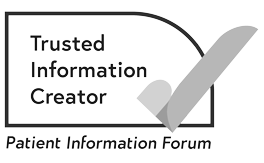Making changes to your diet
You may want to make some changes to your diet. It may take time to find healthy foods and meals that you like, or a diet that works best for you.
How can I make changes to my diet?
It is not always easy to make changes to your lifestyle. It can be more difficult when you also have had a cancer diagnosis and cancer treatment to cope with.
Some people eat more when life is stressful. This is called comfort eating. Others are so busy that they do not have time to look for healthier options when food shopping. It can sometimes be easier to choose ready meals. For some people, the price of food is an issue.
You may want to make gradual changes to your diet when you feel ready, and at a budget you can afford. Eating a healthy, balanced diet does not mean you have to buy expensive foods.
You could start by writing down what you eat for a few weeks, and compare it with our information about healthy eating. Then you can see if you need to make changes.
You can set yourself small, realistic goals and decide how you will achieve them. For example, you could:
- look at the labels of food to help choose healthier options
- try swapping chocolate for a small portion of dried fruit or nuts
- add fresh or stewed fruit to cereal or porridge.
You can set more goals over time. Keep a record of your progress and how you feel physically and emotionally. You may decide to make small or big changes to your diet. It may take time to find healthy foods that you like, or a diet that works for you.
Before making changes to your diet, it can help to talk to a dietitian, your GP or a specialist nurse. This may also be useful if you have special dietary requirements or medical needs. A dietitian can help you make changes. They can also advise you about any other dietary problems you might have during or after cancer treatment.
Making changes can be enjoyable. It can help to try different foods. You may find new foods that you have not tried before. Trying different foods can stop you getting bored. This can help motivate you to continue with a healthy diet in the long term.
Related pages
Healthy eating tips
These tips can help you make healthy decisions when choosing or cooking your food.
Changing habits
- Try to plan everything you are going to eat for the week ahead. This will make you less likely to buy unhealthy food at the last minute. We have a food and activity planner that you may find helpful.
- Start the day with a healthy breakfast. This may help you avoid eating sugary or high-fat snacks in the morning.
- Eat meals at regular times. This will help your body get used to a routine of when you eat. This may mean you are less likely to snack between meals.
- Make sure you drink plenty of fluids. Sometimes we mistake being thirsty for being hungry. Try to have a glass of water before meals.
- Turn off the TV during meals and put down mobile phones or other electronic devices. If you concentrate on your meal, you are less likely to eat more than you need.
Be aware of how much you eat
The amount you eat is just as important as what you eat. If you eat big portions, you are more likely to gain weight. If you want to lose weight, there are things you can do to help you eat smaller portions:
- Use a smaller dinner plate. Bigger plates need more food to fill them.
- Choose a healthy starter, such as low-fat soup, melon or salad.
- Eat slowly and avoid having second helpings. It takes about 20 minutes for your stomach to tell your brain that you are full. Try to wait a while before deciding whether you want more.
- Serve your food directly onto your plate rather than at the table, and pack away any leftovers so that you are not tempted by a second helping.
- Avoid snacking straight from a bag or packet. Put the amount of food you want to eat on a plate.
Fast foods and eating out
Fast food is usually high in calories and fat. If you eat a lot of fast food, ready meals or take-away foods, try to cut down and have these only occasionally.
Try to plan your healthy meals and snacks in advance. If you do not plan, you may end up buying take-away food when you are hungry.
Even if you eat healthily, there may be times when you want to be more relaxed about food. You can still enjoy treats or meals out with family or friends. If you have a take-away or eat out, try to follow these tips:
- Look for the healthier options on the menu. These may be labelled as a ‘light’ option.
- Have a boiled or jacket potato instead of chips. Or ask for boiled rice instead of fried rice.
- Choose baked options rather than fried.
- Try to avoid bread or nibbles before the starter or main course.
- Ask for a smaller portion size, or order a starter as a main course.
- Share a main course with someone.
- Choose tomato-based sauces with vegetables rather than creamy sauces.
- Order vegetables or a side salad to add to your meal.
- After you finish your main course, wait a while before you decide whether to order a dessert.
- If you order dessert, choose one that is fruit-based. Ask for low-fat, low-sugar yoghurt instead of ice cream or cream.
Eating and socialising
Food gives us what we need to keep our bodies healthy and energised. But spending time with family or friends at a barbecue, or celebrating with foods like cake, can also be an important part of our social lives.
Even if you follow a healthy balanced diet, it is normal not to always follow it strictly. Everyone enjoys having an occasional treat or meal out. If you are trying to lose weight, you could try having a smaller portion than you would normally.
Related pages
Healthy menu ideas
Here are some ideas for healthy meals and snacks. You can use our food and activity planner to help plan your meals. To keep a meal healthy and reduce calories, avoid frying foods. If you do fry any foods, use healthier fats, such as unsaturated fats like rapeseed or sunflower oil.
Breakfast
- Low-sugar, wholegrain cereal, muesli or porridge. Have this with skimmed, 1%, or semi-skimmed milk, or an unsweetened, fortified plant-based milk such as almond milk.
- Fresh fruit or berries with low-fat or dairy-free yoghurt.
- A boiled, poached or scrambled egg, or scrambled tofu, with a slice of wholemeal toast.
- A bagel with low-fat cream cheese, nut butter or mashed banana.
- A homemade smoothie, made from fruit, vegetables and low-fat yoghurt or an unsweetened plant-based milk.
- Vegetarian or vegan sausages with a grilled tomato and mushrooms.
- A grilled breakfast instead of a fry-up.
Lunch
- Homemade vegetable or lentil soup with a wholemeal bread roll.
- Grilled chicken salad.
- A poached or scrambled egg on a slice of wholemeal toast.
- An omelette with a side salad.
- A baked potato with tinned tuna (in spring water), sweetcorn or low-fat coleslaw.
- A wholemeal wrap with reduced-fat hummus and salad.
- Pilchards, sardines, mackerel or baked beans on toast.
- A wholemeal bread sandwich or pitta bread with egg or cold meat, served with salad.
- Falafel and salad with a flatbread.
Dinner
- Vegetable or meat curry or chilli with boiled brown rice.
- Wholegrain pasta with a low-fat sauce, vegetables and a side salad.
- Grilled or baked fish, with boiled or baked potatoes and vegetables.
- A vegetarian or vegan burger with vegetables or salad.
- Vegetable, turkey or tofu stir-fry with noodles.
- Lean beef, chicken or vegetable casserole with potatoes and vegetables.
- Grilled chicken with vegetables and potatoes.
- Reduced-fat mince or soya mince and potatoes. You could replace half the mince with vegetables or lentils.
Snacks
- Fresh fruit.
- Seeds, mixed nuts and berries. It can be cheaper to buy these in bulk from a supermarket or health food shop.
- Oatcakes with cherry tomatoes.
- Fresh carrot, cucumber or celery sticks, with a low-fat dip such as hummus or salsa.
- A handful of raisins or other dried fruit.
- Plain rice cakes with reduced-fat cream cheese.
- Homemade plain popcorn.
- Low-fat fruit yoghurt.
More recipe ideas
The World Cancer Research Fund and British Dietetic Association also have healthy recipes from all over the world.
About our information
This information has been written, revised and edited by Macmillan Cancer Support’s Cancer Information Development team. It has been reviewed by expert medical and health professionals and people living with cancer.
-
References
Below is a sample of the sources used in our information about healthy eating and cancer. If you would like more information about the sources we use, please contact us at informationproductionteam@macmillan.org.uk
The Eatwell guide. NHS. Available from www.nhs.uk/live-well/eat-well/food-guidelines-and-food-labels/the-eatwell-guide [accessed July 2025].
World Cancer Research Fund. Cancer risk factors. Available from www.wcrf.org/diet-activity-and-cancer/risk-factors [accessed July 2025].
British Dietetic Association website www.bda.uk.com [accessed July 20235].
Eat well, spend less. British Dietetic Association. Available from www.bda.uk.com/resource/food-facts-eat-well-spend-less.html [accessed July 2025].
Date reviewed

Our cancer information meets the PIF TICK quality mark.
This means it is easy to use, up-to-date and based on the latest evidence. Learn more about how we produce our information.
The language we use
We want everyone affected by cancer to feel our information is written for them.
We want our information to be as clear as possible. To do this, we try to:
- use plain English
- explain medical words
- use short sentences
- use illustrations to explain text
- structure the information clearly
- make sure important points are clear.
We use gender-inclusive language and talk to our readers as ‘you’ so that everyone feels included. Where clinically necessary we use the terms ‘men’ and ‘women’ or ‘male’ and ‘female’. For example, we do so when talking about parts of the body or mentioning statistics or research about who is affected.
You can read more about how we produce our information here.




